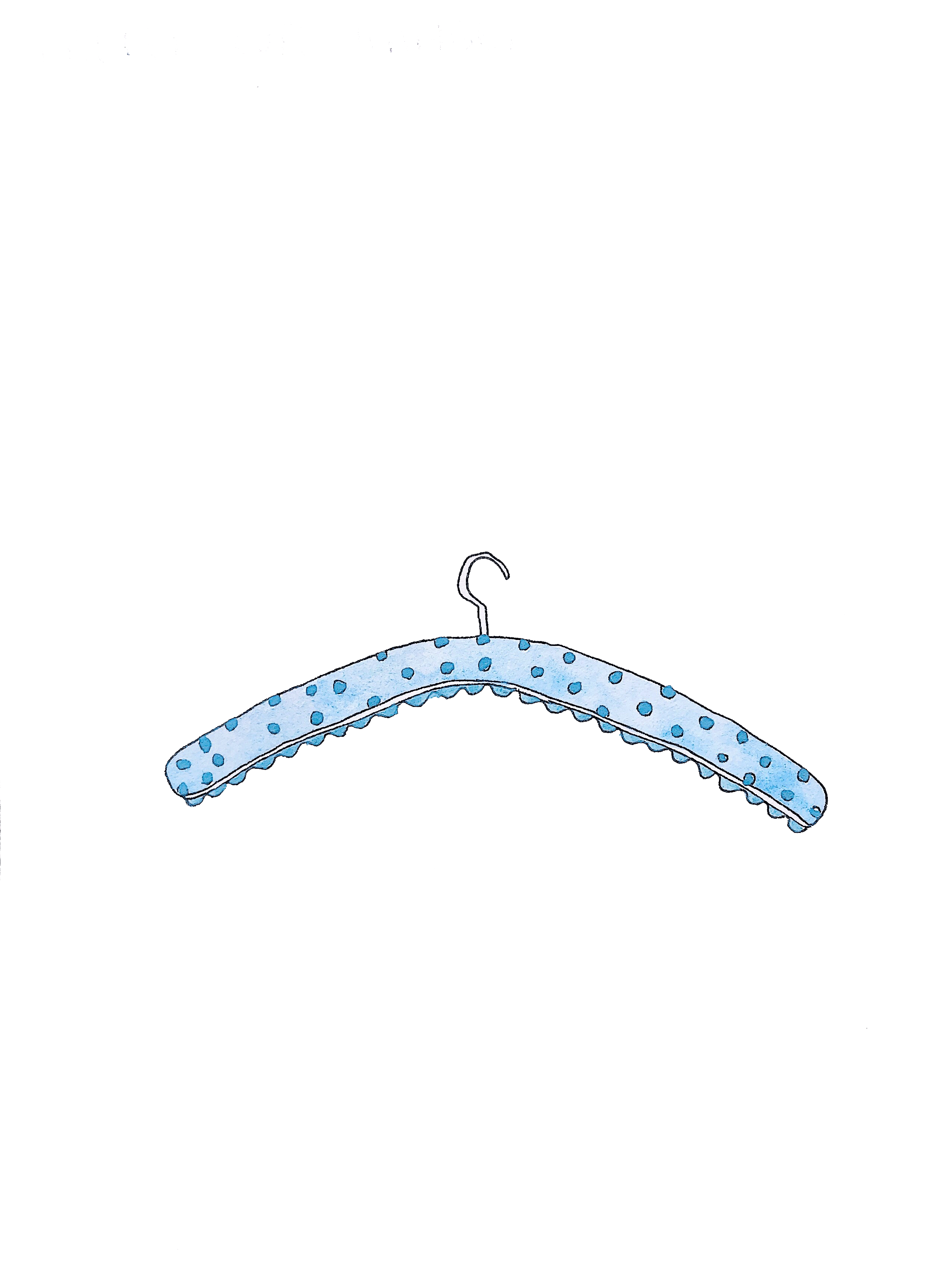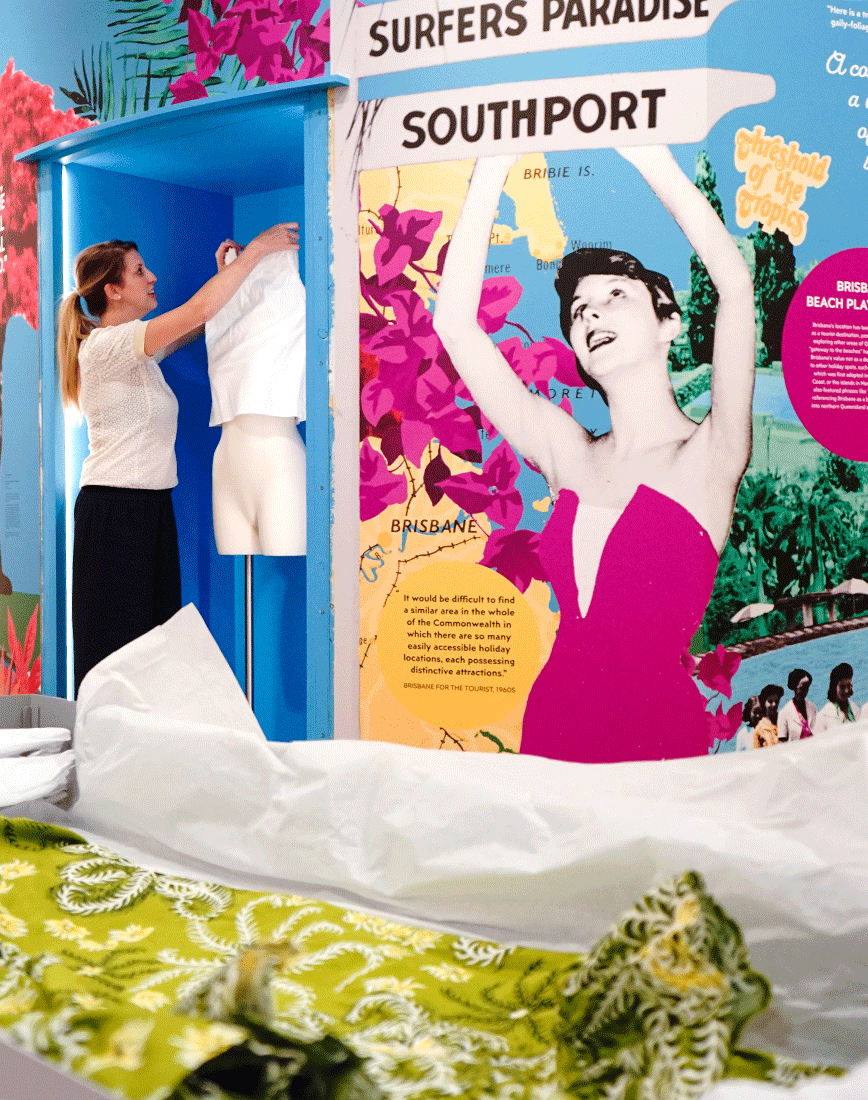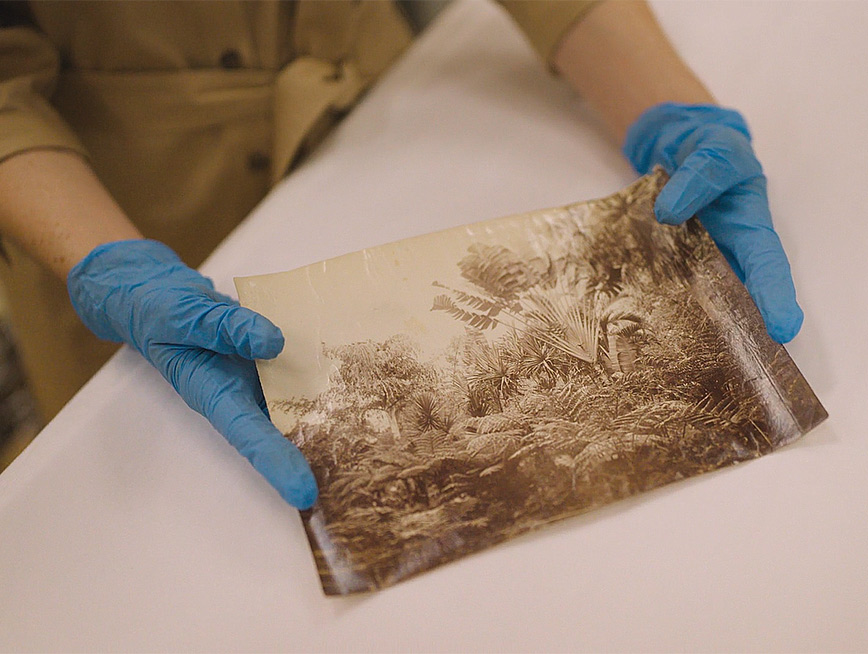By Louise McCullagh for SUNNIE Magazine Issue 1
Illustrations by Holly Neilson
Not all of us have a Dior in the cupboard but we do have our favourite woollen jumper, our best outfit or the tapestry handed down from grandma. Looking after our precious items is a combination of prevention and action, and knowing the five main enemies of textiles is the first step to preventing their deterioration. Below I share some helpful hints for you to conserve your textiles from home.
1. Light
-
Exposure to UV light creates photo-oxidation or the chemical breakdown of polymers
-
Fades the dyes
-
Stimulates acidic conditions in the surrounding environment, which accelerates deterioration
2. Heat
-
Causes textiles to become brittle and yellow, and to distort with the addition of moisture
3. Humidity
-
Causes variation in dimension and size, and is a catalyst for chemical reactions
-
Stimulates mould growth. Once mould has occurred it’s difficult to remove the damage caused by the spores
Tip:
Textiles should ideally be stored at 21-24 degrees Celsius. Ideal conditions for textiles are between 45-55% humidity. Use moisture absorbers to regulate humidity.

4. Dirt
-
Degrades fibres over time if not removed
-
Dust can become ingrained into fibres causing a chemical breakdown of fibres or ageing
-
Attracts insects
Tip:
A vacuum used on the lowest setting is the safest way to remove any dirt or dust ingrained in the fibres of textiles.
5. Pests
-
Clothes moths, webbing clothes moths and the casing of a clothes moth
-
Carpet beetle and juvenile woolly bear
-
Silverfish
-
Spiders
-
Cockroaches
Tip:
Heat and humidity make Brisbane ideal for clothes moths. To prevent them moving into your wardrobe, use clothes moths traps, which are readily available at supermarkets and hardware stores. If you find any pests on your garments, freeze the garment in a completely sealed bag below minus 20 degrees Celsius for one week to ensure the lifecycle is halted.

Prevention
While textiles can be cured, we always recommend prevention prior to a cure. Here are a few prevention strategies:
-
Textiles should always be stored to eliminate creasing as folds cause stress on the fibres and will cause them to break over time.
-
Materials that surround textiles need to be acid free. Be aware that wooden drawers can cause discolouration.
-
Store textiles in polypropylene boxes or acid-free cardboard boxes. This is perfect for heavy dresses or fragile textiles.
-
If you need to fold an item, pad the fold with tissue paper to prevent creases.
-
If you are wrapping or padding items, use acid-free archival tissue or Tyvek, a polyethylene breathable material that works like mulberry paper and absorbs moisture. The wrapping will need to be replaced over time as it will become acidic.
-
Use padded hangers.
-
Always check on your textiles regularly, at least once a year, especially if silk or wool.
-
Consult a conservator if unsure. The Australian Institute for the Conservation of Cultural Materials (AICCM) is a great place to find a conservator, and their website is a source of further information.

About Louise McCullagh
Louise McCullagh has one of those fascinating jobs— she’s a Textile Conservator. Trained at University College London’s Institute of Archaeology and at University of Melbourne’s Grimwade Centre for Cultural Materials Conservation, the list of museums and galleries she has worked with reads like a who’s who. Louise prepared the textiles, including flags, ribbons, lacework, military hats, souvenirs and a Greek orthodox vestment, for the Anzac Legacy Gallery at Queensland Museum; the Easton Pearson Archive for Museum of Brisbane; and is somewhat of a Dior specialist, having worked on two exhibitions at the National Gallery of Victoria and London’s Victoria and Albert Museum for Christian Dior: Designer of Dreams.
Louise describes her job as one of preventing and treating historical textiles to halt their deterioration and future degradation. In maintaining collections, she strives to understand the significance of the object as well as its chemical and physical structure in order to ensure an ethical treatment, one that doesn’t compromise the object’s historical significance. Louise does this by analysing the textile’s condition, material, storage environment and history.
You can find out more about Louise on her website.

About Holly Neilson
Holly Neilson is an illustrator and creator of Paper Hands. She works across murals, portraiture, fine line drawings and watercolour and has been featured in exhibitions nationwide.
View more of Holly’s work in A City Submerged or via her social media channels.

About SUNNIE Magazine
SUNNIE is a collectable magazine showcasing the contemporary, cosmopolitan, and confident city of Brisbane.
Both ‘about’ and ‘by’ Brisbane, SUNNIE platforms and amplifies the city’s rich pool of writers, photographers, authors, artists and designers.
SUNNIE is published by Museum of Brisbane.








